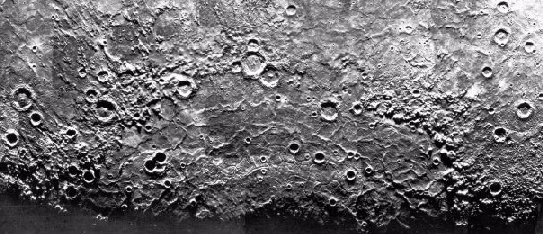Astronomy Picture of the Day
Discover the cosmos! Each day we feature a different image or photograph
of our fascinating universe, along with a brief explanation written by a
professional astronomer.
January 20, 1996

Mercury's Caloris Basin
Credit:
NASA,
JPL,
Mariner 10
Explanation:
Mercury, the closest planet to the
Sun, has a surface with so many craters
it resembles the
Earth's
Moon. The largest surface feature on
Mercury is the Caloris Basin, which resulted from a collision with an
asteroid.
The basin, which is more that 1000 kilometers across, is visible
as the large circular feature at the bottom of the above photograph.
Similar features, such as the Mare Orientale,
are seen on the Moon.
The Caloris Basin gets very hot because it is near the "sub-solar point" - the
point on
Mercury's surface
that is directly under the
Sun when
Mercury
is closest to the Sun.
Tomorrow's picture: Mercury's Faults
| Archive
| Index
| Glossary
| Education
| About APOD |



Authors & editors:
Robert Nemiroff
(GMU) &
Jerry
Bonnell (USRA).
NASA Technical Rep.:
Sherri
Calvo.
Specific rights apply.
A service of:
LHEA
at
NASA/
GSFC



